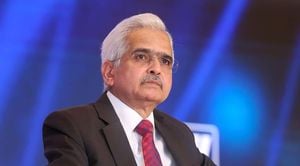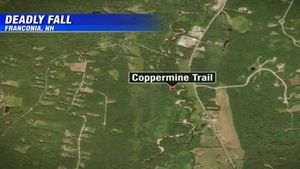Across Canada, municipalities are grappling with budget adjustments, spurred by rising inflation, increased service demands, and volatile economic conditions. From Chatham-Kent to Edmonton, city councils are deliberatively balancing the necessities of public service and infrastructure maintenance against the constraints of property tax increases.
Chatham-Kent’s budget adjustments kickstarted their proposal discussions with significant shifts made during the first night of deliberations on their 2025 budget. A proposed tax increase which initially stood at 5.96% was trimmed down to 5.09% thanks to motions by Councillor Anthony Ceccacci. By extending the gravel topping service for roads from every three years to four years, the municipality found savings of approximately $1.65 million. This decision was met with some controversy; critics argued it would detrimentally affect rural service areas. Yet, those advocating for it highlighted the urgent need for budgetary prudence.
Ceccacci’s efforts didn’t stop there. His second motion aimed to excise around $1.04 million from the budgeted funds originally earmarked for inflation adjustments. While this strategy strategically minimizes immediate tax burdens, it does raise concerns among municipal staff, who noted it would likely curtail funding for future infrastructure projects. Chief Financial Officer Gord Quinton cautioned about the long-term impacts of such decisions, particularly considering the lavish requirements of the growing community.
Adding to the fiscal conundrum was Councillor Carmen McGregor’s push to reinstate funding for dust control services, which had been cut following reports of inefficiency and environmental concerns. The estimated $1.3 million cost for this service had originally inflated the proposed tax hike. When McGregor countered during the deliberations with her arguments, most councillors sided against reinstatement, favoring other pressing budgetary concerns. This incident underscored the complex interplay between community demands and fiscal responsibility within budget discussions.
Meanwhile, over at Saskatoon, the proposed property tax increase for 2025 echoed similar themes. Initially set at 5.64%, the increase has now been adjusted to 5.84%. The city is amid unprecedented growth, with more than 26,000 new residents arriving within two short years. The administration linked the tax hike to maintaining service levels and funding strategic initiatives necessary to balance the operating budget. Despite the climb, Saskatoon's council reported this increase follows recent hikes of 6.04% and 3.93%—signaling mounting increases over the past few years. During budget deliberations set for early December, Mayor Cynthia Block and councilors will need to confront whether the community is on board with another set of tax increases amid their rapidly growing needs.
Further west, Edmonton’s city budget faces scrutiny of its own as it contemplates cutting the neighbourhood renewal program to save taxpayers money. The renewal program, launched back in 2009, allows the city to repave roads and replace old infrastructure and is set to cost $159 million annually. A city report presented indicated cutting this program by 25% could mean significant savings, estimated at around $40 million. Councillors are now torn between the short-term financial relief this cut could offer and the longer-term ramifications it may have on city infrastructure, especially for communities earmarked for reconstruction.
Edmonton Council finds themselves at odds, with arguments for maintaining these services stemming from previous commitments to neighborhoods for upcoming renewals. Some council members have pushed back against the proposed cuts, underscoring the importance of fulfilling these obligations and ensuring safety within neighborhoods. The looming 8.1% property tax increase intermingles with these budget discussions, creating higher tension about how much citizens are expected to shoulder for their community’s growth.
Meanwhile, the residents of Ottawa are also partaking of the budgetary balancing act. Recently debated at the transit commission was the potential steep hike of 120% for seniors' transit passes. The outcry from community members led to proposals to halve the increase, making the new monthly pass $78.50 instead. Critics emphasized the need for financial relief, especially for vulnerable demographics like seniors reliant on public transport. Nevertheless, the discussions continued amid broader conversations about youth fare discounts set to phase out, igniting discontent among younger residents.
Underlying all these budget discussions is the complex issue of rising costs associated with municipal operations. Inflationary pressures mean municipalities must wrestle with how to responsibly manage projects and services without overburdening the community with excess taxes. Many municipalities are moving toward finding efficiencies amid service demands, ensuring taxes taken from property owners are judiciously spent.
Every city appears to be caught between the needs of their constituents, the challenges imposed by increasing costs, and the political ramifications of budget choices. Whether it's about gravel roads or sandwiching fare increases, the choices made during these deliberations could shape the visible fabric of the community for years to come. The long-term planning of budgets remains imperative as municipalities attempt to navigate the tangled waters of economic pressures and growth expectations. The outcomes of this budget year will likely ripple through 2025 and beyond as Canadian municipalities strive to maintain equitable services and infrastructure.
Tomorrow night, more discussions are slated across Chatham-Kent where councillors will continue to balance the needs and resources of their growing community. It is evident across the nation’s municipalities' deliberations, finding the equilibrium between fiscal responsibility and community investment remains at the forefront of local governance.



